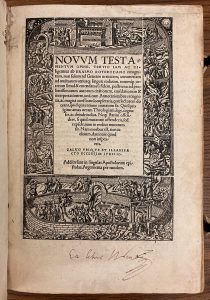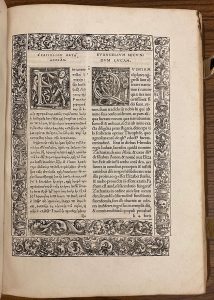This month in Reformation history: Martin Luther translates the New Testament
Five hundred years ago, during the summer of 1521, Martin Luther sequestered himself at Wartburg castle. While in hiding from secular and Papal authorities who might arrest him on heresy charges, he set to work translating the Bible into vernacular German according to his understanding of scripture.
In Germany, vernacular Bibles based on the Latin Vulgate version had circulated in manuscript for several centuries. The first printed German-language Bible was produced in Strasbourg in 1466. Luther felt these translations and the Vulgate itself were corrupted and that a new translation was needed to correct the errors that had been introduced over the centuries. He began by translating the original Greek text of the New Testament. He turned to the recently published Greek New Testament edited by the well-known Dutch scholar Desiderius Erasmus.
Erasmus had a scholarly interest in editing biblical texts, both of the Vulgate version and of Greek biblical manuscripts which were being rediscovered during the late 15th and early 16th centuries. Erasmus published his edition of the Greek New Testament in Basel, Switzerland in 1516. The Greek text was placed side-by-side with his own Latin translation. A second edition was published in 1519. Luther used this edition to translate the New Testament into German. Erasmus’s version was printed three more times, in 1522, 1527, and 1536. The third edition of 1522 would be used by William Tyndale as he translated the Bible into English. BYU’s copy of the 1522 edition is shown here.

Title page of the 1522 Erasmus New Testament

The Gospel of Luke